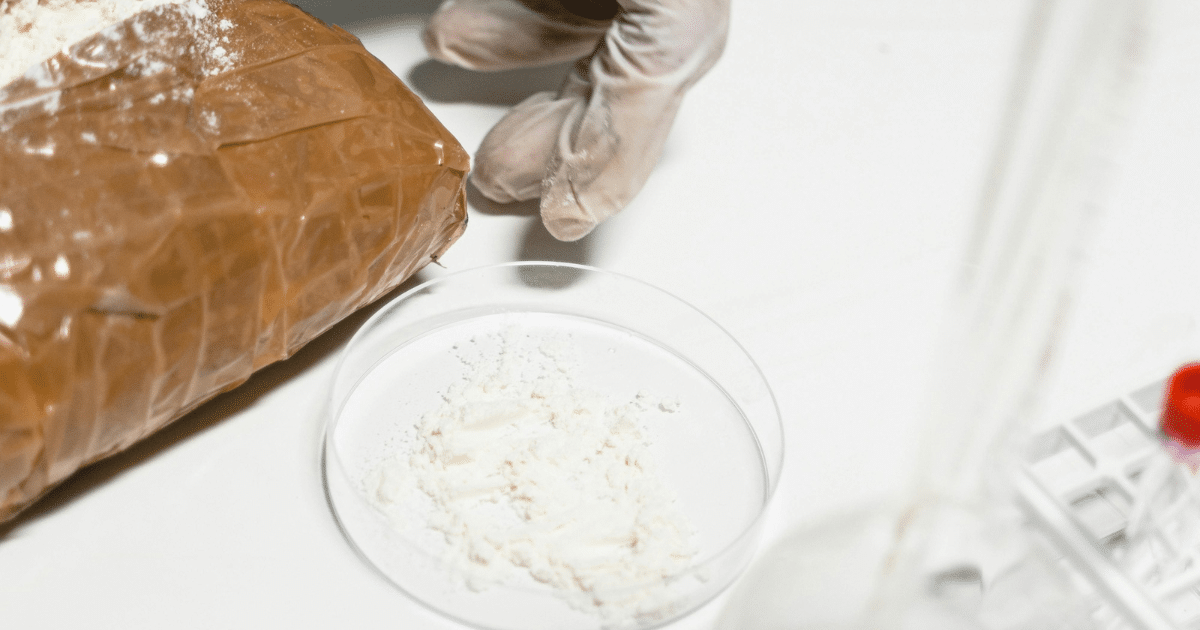In the realm of illegal stimulants, the two drugs that are mostly mentioned are crack and meth. But why does it matter and what is the difference between crack and meth? Although they are both strong and quite addictive, they are different when it comes to their chemical nature, origin, effects on the body and brain, legal status, and even their usage. These variations can significantly impact a person’s path to addiction and their journey toward recovery.
According to the National Institute on Drug Abuse, over 2.5 million people used methamphetamine, and more than 1.5 million used cocaine, including crack, within the past year. Such figures show an increased vulnerability since both drugs still influence the national population.
What Are Crack and Meth?
Both crack and meth are strong stimulants that change brain chemistry and increase central nervous system activity. Although they have similar effects, provoking stimulation, they have different origins and chemical compositions. Understanding the difference between crack and meth starts with clearly knowing what each drug is, how it’s made, and its effects on the user.
Crack: A Potent Form of Cocaine
Crack is a smoked cocaine in a crystallized form. It is made by dissolving baking soda and water in powder cocaine, leaving it as a hard rock type of crystal. The high of crack is rapid and intense and can end after 5 to 10 minutes. Crack is also more available to low-income neighborhoods because it can be easily produced at a low cost.
Meth: A Synthetic Stimulant
Meth (methamphetamine) is a highly synthetic drug that is produced by illegal laboratories by using over-the-counter drugs, as well as chemicals such as lithium, ammonia, hydrochloric acid, and others. Meth is unlike crack, which has a natural source. It is available in the form of white powder or crystalline pieces that are commonly referred to as crystal meth, and the high may last between 8 to 24 hours which makes it highly addictive.
Although both crack and meth are street drugs that are stimulating in nature, there are several differences between the physical appearance of the two and thus can aid in the identification of one as opposed to the other. It is necessary to know what the difference is between crack and meth as they have such visual distinctions, which can serve as important knowledge in case of substance abuse, policing, and treatment.
The main differences in appearance are given in the table below:
| Feature | Crack | Meth |
| Color | Off-white to yellowish or tan | White or transparent |
| Form | Small rocks or nuggets | Shards or fine powder |
| Common Nicknames | Crack, rock, base | Meth, crystal, ice, crank |
| Packaging | Small plastic bags or vials | Plastic bags, foil wraps, glass tubes |
Silicon Valley Recovery Center
Usage Patterns and Methods of Consumption
The route of administration of crack and meth is a big contributor to the speed with which they take effect and the extent to which such effects last. Such stimulants are also very differently administered, and this fact is associated with different risks of addiction and health issues. The investigation of their common use patterns allows for bringing out the difference between crack and meth in real-life scenarios.
Crack: Fast-Acting and Short-Lived
In almost all cases, crack is inhaled, and the drug goes into the brain in a few seconds. This gives the user a quick and intense high that wears off very fast, causing the user to smoke several times within a short time just to sustain the effect.
The frequent crack forms include:
- Smoked through a glass pipe
- Sometimes mixed with marijuana or tobacco (a “primo”)
- Typically consumed in short, repeated sessions (binges)
- High lasts 5 to 10 minutes
Meth: Long-Lasting and Versatile
Methamphetamine may be smoked, snorted, swallowed, or injected, and this gives its users an option depending on the level of addiction or convenience. The high from meth lasts significantly longer than that of most drugs, so users are likely to skip days without eating or sleeping during a binge.

Common methods of using meth are the following:
- Smoked in a glass pipe (most popular)
- Snorted as powder
- Injected for rapid, intense effects
- Taken orally in pill or capsule form
- High can last 8 to 24 hours
Addiction Potential and Psychological Effects
Both crack and meth are highly addictive, although the process of development of an addiction and other psychologically observed factors may differ by far. Knowing what the difference is between crack and meth is vital to people struggling with substance use or those providing care to those who have quit the use of substances, because the addiction potential and the related psychological effects of these substances need to be understood.
Crack Addiction and Mental Health Impact
The effects of crack cocaine are quick, strong, and dissipate very quickly, giving the user a tendency to repeat the habit in quick intervals. Binge behavior develops a high psychological addiction, and quitting becomes very hard without assistance.
Important psychological consequences of crack addiction:
- Intense cravings after short highs
- Anxiety and paranoia
- Irritability and aggression
- Depression during the withdrawal phases
- Loss of interest in responsibilities or relationships
Meth Addiction and Mental Health Impact
As a long-lasting substance, methamphetamine can put users under the influence of the drug for several hours or even days. With time, meth seriously distorts the work of the brain, causing psychological and behavioral problems. When it is used chronically, it can cause psychosis, hallucinations, and violent behavior.
Important psychological consequences of meth addiction:
- Extreme euphoria followed by emotional crashes
- Insomnia and hallucinations
- Violent outbursts and unpredictable behavior
- Long-term cognitive damage and memory loss
Silicon Valley Recovery Center
Physical Health Risks and Long-Term Consequences
Each drug carries its own set of risks, ranging from cardiovascular issues to severe skin damage. These effects on the body are important characteristics when trying to understand what is the difference between crack and meth and how lengthy use can prove so dangerous.
The table below shows a comparison between physical health risks and long-term effects of crack vs meth use:
| Health Impact | Crack | Meth |
| Cardiovascular damage | High blood pressure, heart attack risk | Rapid heartbeat, heart failure, stroke |
| Respiratory issues | Lung damage from smoking, coughing | Breathing problems from smoking or snorting |
| Skin and facial damage | Burns or blisters on the lips and fingers | Skin sores, acne, and obsessive skin-picking |
| Weight loss | Decreased appetite, malnutrition | Extreme weight loss, muscle breakdown |
| Neurological deterioration | Possible seizures, motor impairment | Long-term brain damage, memory loss |
| Immune system compromise | Increased risk of infection | Higher susceptibility to illness |
Break the Cycle of Stimulant Addiction With Silicon Valley Recovery
Although crack and meth are serious sources of stimulant drugs and highly addictive, there exist comparisons between how each of these drugs looks, how they are taken, their psychological implications, and their physical harmfulness.
If you or someone you love is struggling with methamphetamine or cocaine addiction, help is available. Contact Silicon Valley Recovery today to begin a safe, supportive, and personalized journey to healing and long-term wellness.

Silicon Valley Recovery Center
FAQs
How do the effects of cocaine and methamphetamine differ in terms of addiction and psychological impact?
Cocaine, specifically in its crack manifestation, has an immediate yet brief high, which in most cases would result in binge use and emotional dropouts. Compared with cocaine, methamphetamine has a significantly longer duration of high and tends to induce psychosis, paranoia, and chronic impaired thinking.
What are the main differences in the appearance and chemical composition of crack cocaine and methamphetamine?
Crack is rocklike, and it is merely powdered cocaine mixed with baking soda, whereas meth is a synthetical drug, shining in crystal or powder form. Crack is produced through the coca plant, whereas meth is created in a laboratory with the help of dangerous chemicals.
In what ways do the usage patterns and methods of consumption vary between crack and meth?
Crack is usually smoked, and its high is instant, focusing or lasting a few minutes, after which the euphoria of the effect may last. Some may smoke it again within a short period. Meth may be smoked, snorted, injected, or swallowed, and its high may last up to 24 hours which encourages binges in its use.
What are the physical health risks and long-term consequences associated with the use of crack cocaine versus methamphetamine?
Crack use often results in cardiovascular problems and lung damage, while meth use is associated with severe tooth decay, skin sores, and in extreme cases, brain damage. Both of them may lead to severe weight loss, impaired immunity, and irreparable health degradation.
How does the legal status and societal impact differ between crack and meth in various regions?
Crack cocaine has historically been subject to harsher penalties in many legal systems, often disproportionately affecting marginalized communities. Meth, though equally illegal, has become a widespread concern in rural and suburban areas, leading to different public health and law enforcement responses.


